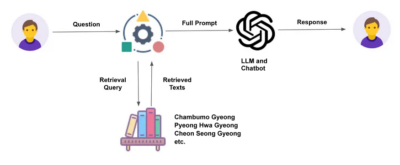♦ Last Updated on August 7, 2024 ♦

The benefits and risks of artificial intelligence in character education need to be evaluated. Social media apps like TikTok are said to have already had a negative effect on our youth. Parents are stumped as to what to do about it. Arrived has the AI revolution on top of it.
Emerging Technologies
Emerging technologies often lead to new and exciting learning opportunities for students – at home and in school, particularly in increasing personalization and accessibility options. While Artificial Intelligence (AI) can be a valuable learning tool for educators (parents) and students (children), it must be evaluated according to usage terms, and clear guidelines for data collection and content provision should prioritize student safety and growth.
I encourage educators to approach AI with a shrewd lens. As educators and students learn about the potential inaccuracies, bias, and social impacts of AI, they build the capacity to promote the ethical use of technology. We need to support educators to adapt their teaching methods to incorporate emerging technologies effectively in line with student needs.
While we cannot predict the future, technology will undoubtedly continue to influence our personal and professional lives.
Unsuspecting Users
For many in the public arena, data collection by AI service and product providers on users is the number one concern. However, I am more concerned about the content that Generative AI returns to unsuspecting users based on their undiscriminating prompts.
Here is an example. I had Gen AI write and return an excerpt of a lengthy essay on the issue of recognition in social relationships. One of the sentences of the original article read this:
Acts of recognition infuse many aspects of our lives such as “…fighting to have your same-sex marriage officially sanctioned to enjoy the same benefits as heterosexual marriages.”
In the AI-generated excerpt, AI added a subtle bias to that sentence as it returned the following: “…the ardent struggle for the legitimization of same-sex marriage to secure equivalent rights as heterosexual unions.“
The ‘fight’ now is an ‘ardent’ struggle! Artificial Intelligence took sides honoring a gay and lesbien population’s efforts. While the original sentence did not differentiate between the states of marriage and union, the AI-generated excerpt assigned the privilege term of marriage to same-sex couples and the function term of union to heterosexual couples. As if that was the de-facto state of affairs already when, as it seems, it is only what same-sex couples crave to recognize and honor their same-sex bondings.
Privileging heterosexual Bonds
Contemporary cultures largely privilege heterosexual bondings as marriages for valid reasons. The privilege is justified by the urge to survive and dominate – as a species. Union is an expression too blasé for same-sex couples as it does not bestow a particular badge of honor or prestige on the same-sex bond. Same-sex couples, I suspect, are not only after the same financial benefits (less taxed, etc.) and legal protection afforded to heterosexual couples (fair enough), but are intent on hijacking the term marriage as well to diminish the recognition of the extraordinary valor inherent in stable heterosexual families and equalize themselves by indifferentism. Ordinary valor is just not good enough.
If that change of tone in an AI-generated response is not worrisome, what is? The public discourse is nowadays so full of ‘woke’ expressions that generative artificial intelligence cannot help but pick up on this trend and reproduce this bias unwittingly as the de facto standard. Naive people, young and old, are being seriously conditioned as we speak.
That is why I try to develop a guarded front to generative artificial intelligence, possibly producing inaccuracies and outright bias. I take two approaches to mitigate this situation. For once, users querying a chatbot can write their prompt to put the chatbot into a certain awareness, that of a liberal, conservative, or neutral ‘role.’ Secondly, the public discourse or source of information that a chatbot draws on is augmented with preapproved content.
Learn how to Prompt a Chatbot
If a chatbot like ChatGPT is asked a simple question, it returns a simple answer. Does that make sense? How would a chatbot know what you are after if you do not sufficiently express your intent?
So, people need to learn how to prompt a chatbot, that is, how to best phrase their questions or concerns to ‘set up’ or condition the chatbot to their liking. Whatever that may be, doing so places the user into a position of agency and power. It is like “Uh, whom do I talk to today? My trusted high school teacher or that lawyer running for a position on the city council?”
Sample Prompt:
You are a university professor and have published well-reviewed books on faith-based character education... Now, the user is responsible for any bias, religious or secular, that might transpire via the chatbot’s response. The chatbot will unlikely infer an answer colored with what a Jean-Paul Sartre might have to offer and rather draw on material produced by a Thomas Lickona.
Augment Context with own Content
Chatbots draw on Large Language Models (LLMs) for returning content. These LLMs are immensely large knowledge libraries set up to assign tokens of meaning to particular pieces of content. They have been made to ingest the entire public human discourse, that is, anything and everything ever published and digitized up until a running cutoff in time.
Unbelievably, their programmers have been able to decipher patterns in human language and thus how human language works, and created software to emulate human thought and speech. The emulation is approximate, for sure. Thus, chatbots are known to recklessly ‘hallucinate’ when they might not really know. Regardless, their abilities to understand the meaning or sentiment of our speech (prompts) and respond in a fairly coherent manner are astonishing.
Who Is Sentient?
Nevertheless, chatbots and their enabling LLMs are not sentient. They are not all-knowing. They may see ‘this’ entire forest, but not ‘that’ little grove of trees in the forest’s periphery. They may respond in perspective of ‘this,’ but less giving weight to the particulars of ‘that.’ That is where RAG, or Retrieval Augmented Generation, comes into play.
RAG is a technique for enhancing the accuracy and reliability of generative AI models, particularly Large Language Models (LLMs), by incorporating facts from external sources of knowledge.

Simply speaking, the content of the three Cheon Il Guk books, as well as other texts still forthcoming, can augment the overall context from which these LLMs draw and provide answers via the chatbot to a prompting user. That little grove of trees, perhaps overlooked, has now become a more prominent part of the discourse between AI and humans. Less misinformation, less bias!
Yes, a user can now simply enter a PDF into the chatbot’s content window for reference. That helps. But a single session with a chatbot will not take nearly the large library of speeches and guidance produced by the Rev. and Mrs. Moon and their followers.
Companies of all sizes are in the process of augmenting LLMs with their particular knowledge.
Hard to Understand and Hard to Implement
I am breaking my little brain on this. I’d rather sit with a beer and watch all the football due next month. But the best never rest. While I am not that religious anymore, I see enough goodness in religion to help young people find a sustainable orientation in life. Religion is simple, while philosophy and psychology are hard. Most people can handle a bit of religion, but who can read and understand G.F.W. Hegel.
As a ‘Peace Starts With Me’ movement, perhaps its members must learn to deal with Generative AI to give their offspring a better chance at peace and prosperity.
Do you have any ideas about this issue? Funds? Please contact Christine.
